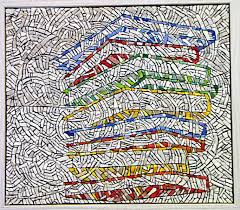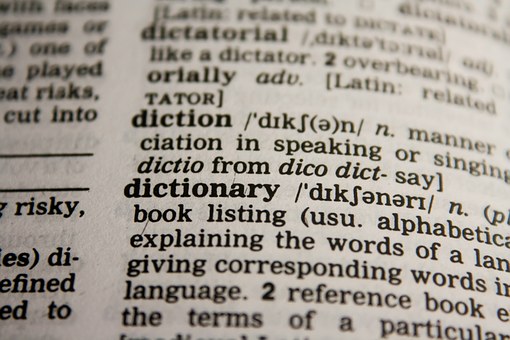Late Bloomers And Reading Development: Why You Should Never “Wait And See”

Up until about ten years ago, there was a prevailing theory in reading instruction that some children simply took longer to mature. If they were having reading difficulties, time would somehow fix them, and they would eventually catch up. In short, these children were seen as being “late bloomers.” Teachers would tell parents to wait and see and early intervention for reading was delayed under the assumption that these students simply needed more time to catch up to their peers.
This was known as the developmental lag theory and was the prevailing ideology for nearly 30 years. It was also the justification for waiting to intervene in reading until the difficulties were quite severe. However, as our understanding of reading instruction has grown, this theory has been disproven by the evidence.
New research indicates that early intervention with an appropriate Structured Literacy program is crucial to closing the reading gap. This new theory, known as skill deficit, indicates that waiting does not work and that children will not pick up literacy skills without explicit instruction. The old approach of wait and see is actively harmful to struggling readers as it causes them to fall further behind instead of addressing their reading issues.
The research behind skill deficit theory is substantial and indicates that students who struggle with reading need early intervention as it makes their reading success significantly more likely. In fact, 90% of students who struggle with reading difficulties will achieve grade level reading outcomes if they receive reading intervention by the first grade. However, if intervention is delayed to age 9 or later, 75% of these students will continue to struggle throughout their school career. Furthermore, if students get reading intervention in the fourth grade as compared to the end of kindergarten, it will take them nearly four times longer to make the same amount of skill gains.
So, what does this mean for parents and teachers? Well, quite simply put, it means that late bloomers are not going to bloom without some help. Children who struggle with early literacy skills have the best chance of catching up if they are given appropriate Structured Literacy intervention. The earlier they can start, the better their outcomes.

Students who do not receive appropriate early reading intervention can seem to be stuck in a sort of downward spiral, but it does not have to be this way. While it is clear that we cannot “wait and see” to improve reading, there are methods of intervention that are supported by the most recent reading research.
If your child struggles with reading, it is critical that they get the help they need. However, not all reading intervention is created equal and if you want to close the gap, you need to make sure their intervention is appropriate. Teaching something the same way repeatedly will not cause them to magically “get it.”
At risk readers need explicit, systematic instruction. They need an OG based program like our online tutoring program that emphasizes phonological awareness skills like rhyming, phoneme segmentation, blending, and substitution. They need explicit and systematic phonics instruction as well as direct instruction in vocabulary and word meanings. A quality program will also include direct and explicit instruction in morphemes and include significant practice time. A fluency component will also need to be directly taught so that children learn to read quickly and accurately. Comprehension also needs to be included and specific.
With appropriate and early intervention, children who struggle with reading can and do catch up to their grade level peers. As a parent, we want our children to experience success and an effective reading program is one of the best ways we can ensure they learn to read.
After reading this, if you have an older child, you may feel disheartened. Don’t. While early intervention is more effective, you can still intervene with older students. The process may be slower, and it may require a more intensive schedule, but it is possible.
If you are looking for an effective program for your child, regardless of their age, our online tutoring may be the right fit. Our trained reading clinicians work with your child one-on-one using research-based techniques. With the right help, your child can succeed.
Becky WelschRW&C, LLC
www.rwc4reading.com
Becky Welsch has a Master’s degree in K-8 Education. She is certified to teach in the state of Arizona and has special endorsements in the areas of English Language Learners and Reading.
Sources:
https://www.aft.org/periodical/american-educator/fall-2004/avoiding-devastating-downward-spiral
https://www.greatschools.org/gk/articles/reading-disorder-or-developmental-lag/
https://www.readingrockets.org/article/waiting-rarely-works-late-bloomers-usually-just-wilt
Resources for Choosing an Intervention Program:

 If you were asked to name a pivotal year in school, one that influenced future academic success for years, what would you say? Junior high, senior year of high school, the first year of college? While these are all important landmarks in an individual’s education, I would argue one of the most critical years is third grade.
If you were asked to name a pivotal year in school, one that influenced future academic success for years, what would you say? Junior high, senior year of high school, the first year of college? While these are all important landmarks in an individual’s education, I would argue one of the most critical years is third grade. disabilities who receive appropriate intervention focused on accuracy and fluency by the end of 2nd – 3rd grade will usually catch up (Torgesen et al., 2003). Unfortunately, students who get appropriate intervention after 3rd grade do not catch up in terms of reading fluency. This group of students may get close to their peers in accuracy; however, fluency, while it improves over time, remains behind peers and presents a significant reading impediment.
disabilities who receive appropriate intervention focused on accuracy and fluency by the end of 2nd – 3rd grade will usually catch up (Torgesen et al., 2003). Unfortunately, students who get appropriate intervention after 3rd grade do not catch up in terms of reading fluency. This group of students may get close to their peers in accuracy; however, fluency, while it improves over time, remains behind peers and presents a significant reading impediment. While these are all great ways to help your child who struggles to read, the best and most important thing you can do as a parent is getting your child the
While these are all great ways to help your child who struggles to read, the best and most important thing you can do as a parent is getting your child the  When students struggle with reading and literacy, it is imperative that their reading intervention go hand in hand with writing and explicit spelling instruction. Often, in the classroom, it is the case that spelling instruction is an after-thought and is confined to spelling drills and memorization (Birsh, 2005). However, for students who struggle with
When students struggle with reading and literacy, it is imperative that their reading intervention go hand in hand with writing and explicit spelling instruction. Often, in the classroom, it is the case that spelling instruction is an after-thought and is confined to spelling drills and memorization (Birsh, 2005). However, for students who struggle with  I cringe thinking about some of my first parent/teacher conferences when I told parents “there is always spelling check.” I adopted the common classroom philosophy that if students were immersed in print, and taught to read, they would somehow magically learn to spell (Birsch, 2005).
I cringe thinking about some of my first parent/teacher conferences when I told parents “there is always spelling check.” I adopted the common classroom philosophy that if students were immersed in print, and taught to read, they would somehow magically learn to spell (Birsch, 2005).

 Our reading clinicians also have extensive knowledge of child development and know when to correct spelling and when to allow children to rely on inventive spelling that is based on their own internalized understanding of phonemes and graphemes. This allows us to teach more than memorization because we teach the skills that students are developmentally ready for and not skills that are above their level. Just like in reading, in spelling it is “not the age, it’s the stage.” Students should not be pushed to memorize spelling patterns they are not ready for because it will ultimately do more harm than good.
Our reading clinicians also have extensive knowledge of child development and know when to correct spelling and when to allow children to rely on inventive spelling that is based on their own internalized understanding of phonemes and graphemes. This allows us to teach more than memorization because we teach the skills that students are developmentally ready for and not skills that are above their level. Just like in reading, in spelling it is “not the age, it’s the stage.” Students should not be pushed to memorize spelling patterns they are not ready for because it will ultimately do more harm than good.

 In order to serve the student and increase their reading skills, the correct diagnosis of the issue is essential. This is why the reading clinicians at RW&C give each student a variety of
In order to serve the student and increase their reading skills, the correct diagnosis of the issue is essential. This is why the reading clinicians at RW&C give each student a variety of  Coming from a classroom background, I know that often upper-grade teachers are not trained in early literacy and often do not have the resources that students need to master early reading skills. If your older child struggles with reading, they may not get the help they need in school.
Coming from a classroom background, I know that often upper-grade teachers are not trained in early literacy and often do not have the resources that students need to master early reading skills. If your older child struggles with reading, they may not get the help they need in school. In previous blogs, we’ve discussed the importance of
In previous blogs, we’ve discussed the importance of  As your child gets older and moves into upper elementary and middle school, you can encourage them to use post it notes as they read to ask questions, record unknown vocabulary words, and note any surprising information. This can be a great way for them to interact with the text and for you to monitor their understanding. Plus almost all kids love getting to use post it notes so it may even motivate them to read more.
As your child gets older and moves into upper elementary and middle school, you can encourage them to use post it notes as they read to ask questions, record unknown vocabulary words, and note any surprising information. This can be a great way for them to interact with the text and for you to monitor their understanding. Plus almost all kids love getting to use post it notes so it may even motivate them to read more.